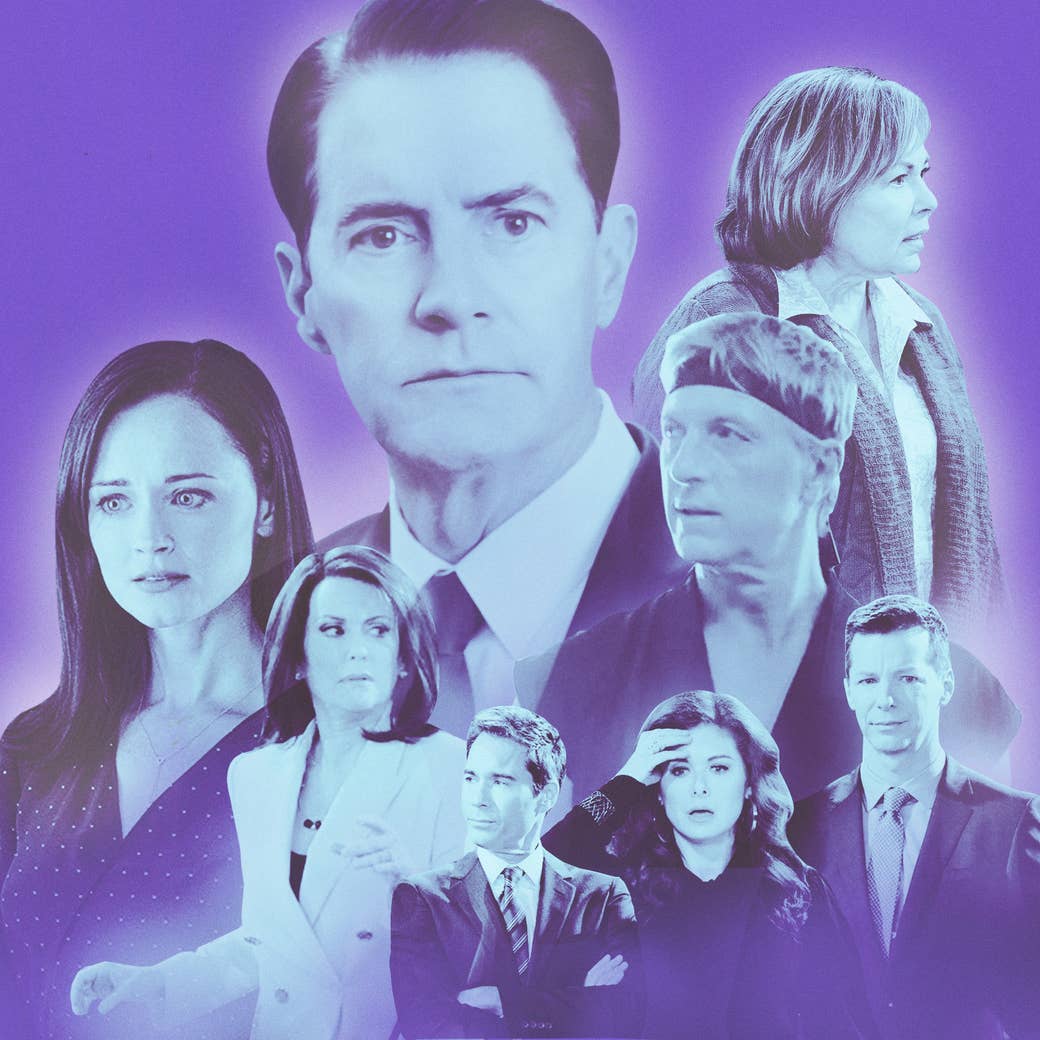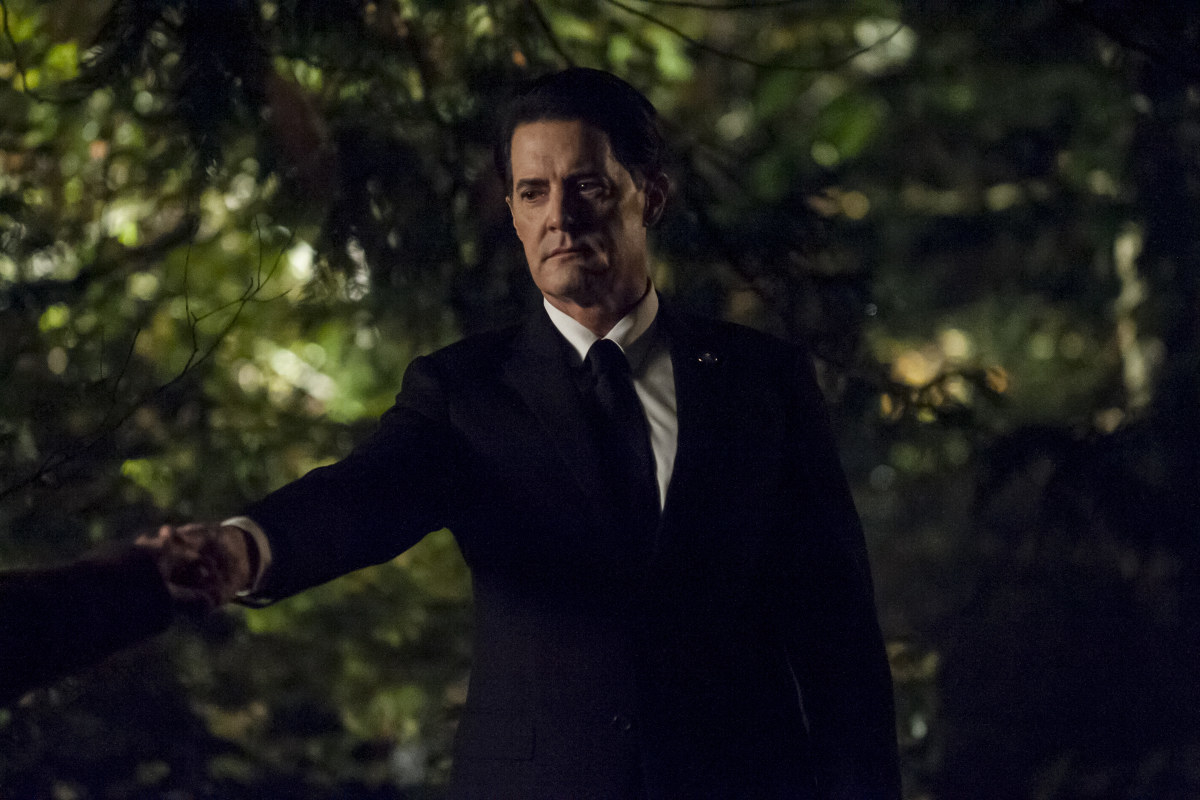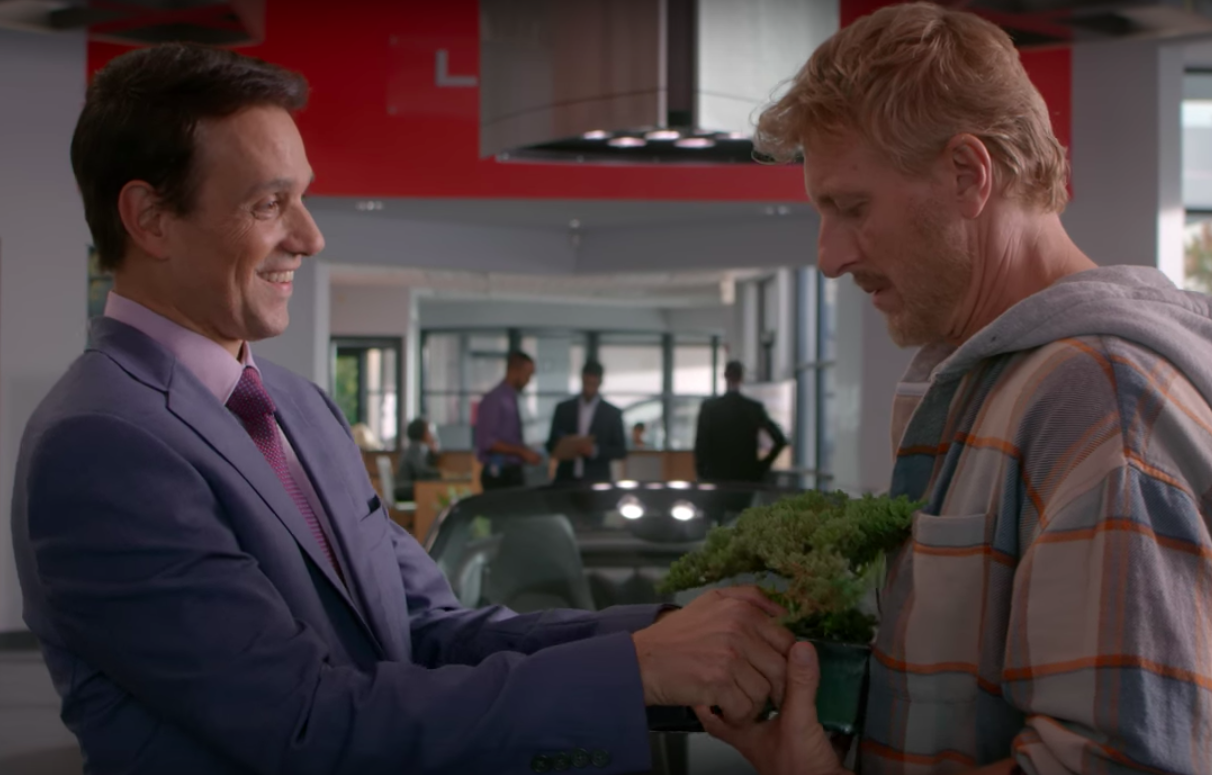
When I first heard that Roseanne was being revived, my heart sank. Not because I didn’t want to watch it; because I did. Despite my awareness of Roseanne Barr’s bizarre political shift, and despite having been let down already by comebacks of other beloved shows, I told myself that the Conners were special. They were the first family I saw on TV that resembled mine; years later, I used the show in the cultural studies courses I teach to talk about class and feminism and media representations. I knew I wouldn’t be able to resist joining millions of other viewers on a trip back to Lanford, but I already had a feeling I wasn’t going to like what I found there. Unfortunately, I was right.
Like many critics, I was put off by the show’s politics and by Barr’s offensive tweets, which led to the show's cancellation (it will now be re-rebooted, without Barr, as The Conners). But there was another layer to my disappointment. Despite some good writing and great acting, in some vague way, it just wasn’t the same. The whole thing felt like an empty echo of what used to be living characters who mattered to me.
The term “reboot” is being used these days to describe a few different phenomena, including sequels, spinoffs, and especially remakes of old shows with a new cast, setting, or premise (like Hawaii Five-0, Queer Eye, or the controversial Charmed update). But it’s specifically what journalist Jeff Yang calls revivals, shows that bring back the original cast and drop them into the present, that seem to inspire the most ambivalence among critics and viewers.
The first crop of these shows, including Roseanne, Gilmore Girls: A Year in the Life, The X-Files, Will and Grace, and Fuller House, have been mostly — and sometimes very — successful by the measures of audience and advertiser interest. Reviews might be mixed, but people are watching. Ratings are high enough that more projects seem to be greenlit every day. We can now look forward to new seasons of Murphy Brown, Daria, The Facts of Life, ALF... Honestly, there are too many to name.
I’ve spent an embarrassing amount of time talking with friends about TV revivals, and I’m finding that I’m not alone in feeling compelled to watch (at least for while), even though, as a viewer, I’ve found these updated shows to be disappointing at best, and at worst, downright unsettling. Fuller House is supposed to be campy, comfy fun, but it isn’t. It’s weird and disturbing. Gilmore Girls: A Year in the Life was supposed to give fans closure after a nonsensical final season. Instead, as a friend of mine put it, “The characters all felt like weak, annoying shells of themselves.” Lorelai and Rory suddenly seemed less adorably quirky than selfish and petty.
The overwhelming consensus seems to be that, whether viewers are old enough to have watched these shows the first time around, or are discovering them through streaming, revivals are fueled by nostalgia. And that emphasis on nostalgia means they’re often discussed in a similar way to what I call retro TV: new stories set in the recent past, like Stranger Things, GLOW, or the short-lived Everything Sucks!. But I want to suggest an alternative explanation for the current popularity of revivals, why they can only ever be unsatisfying, and most importantly, how the dissatisfaction they inspire can be useful.
What if revivals are not actually nostalgic? What if they are ghost stories?
Nostalgia is only one way of looking at history; it functions, essentially, to make the past a safe place to play. The ’80s are over, so GLOW can tell stories about sexual harassment and the danger of stereotypes, and Stranger Things can deliver horror stories about government conspiracies. These stories are disturbing in the present, but nostalgia provides a sort of protective shield between now and then. In other words, even if we’re using these shows to work out contemporary issues, a nostalgic story requires the past to stay put.
But revivals in which a show’s original characters are unearthed to exist in the present are inherently unsettling; they are hauntings. And because of that, they can offer us a way to see how we got from There to Here — and maybe even help us deal with the consequences of our history.

The word “nostalgia” is a portmanteau drawn from Greek that translates to something like “ache for home,” or homesickness. In the 18th century, it was considered a physical disease, often suffered by soldiers fighting in foreign lands. In the 19th century, it came to be understood as a psychic condition experienced almost universally. According to literary theorists Linda Hutcheon and Mario Valdés, “As early as 1798, Immanuel Kant had noted that people who did return home were usually disappointed because, in fact, they did not want to return to a place, but to a time, a time of youth. Time, unlike space, cannot be returned to — ever; time is irreversible. And nostalgia becomes the reaction to that sad fact.”
There is no cure for this affliction, but retro television treats its symptoms. The most overtly nostalgic series — Happy Days, The Wonder Years, That ’70s Show — distilled the past into innocent, easily recognizable tropes while offering viewers new stories and characters to interact with there. They reaffirmed the ideals of contemporary viewers and solidified a particular version of history. And these shows tended to fall apart when they strayed too close to the present. No one wanted to see Richie Cunningham get drafted.
Nostalgia also enables us to rewrite the past so it looks more like we wish it had been. Netflix’s Everything Sucks! is set in the mid-’90s and follows a group of teenage misfits and theater kids in Boring, Oregon. I actually was an artsy drama kid in small-town Oregon in the ’90s, so I can say with some authority that Everything Sucks! gets everything wrong. Mostly this is just annoying, but sometimes it’s worse. For example, the show has a black lead, yet never mentions race. This effectively whitewashes Oregon’s racist history — a history that resurged in the 1990s — and erases the work black Oregonians have done to change it. That’s the danger of nostalgia: Even when it tries to be progressive, keeping the past at a distance makes it easy to gloss over the icky parts, especially when the power to select and frame stories remains in the hands of people who benefit from the status quo.
Nostalgia isn’t inherently conservative, though. Netflix’s GLOW, about a 1980s women’s wrestling show, is a complex demonstration of intersectional feminism and the paradoxes of representation. ABC’s Fresh Off the Boat, about an Asian American family in the 1990s, is part of a classic TV tradition of domestic sitcoms, but tells a story that same genre canceled or ignored in the ’90s. Hutcheon and Valdés write that nostalgia depends “on the irrecoverable nature of the past for its emotional impact and appeal.” This is true of even shows that use nostalgia to create critical distance. And this is something that wholesale revivals can never deliver. Instead, they pull familiar characters out of their graves and set them bumping around their old houses. What else could that be but a ghost story?
It’s no coincidence that many revivals have begun by explaining why dead characters, like Dan Conner, are alive again, or why children, like Will and Grace’s, never existed. They also need an impetus — often death or divorce — for characters to revert back to old living situations, and these explanations heighten a sense of the uncanny. I found it odd to see the Conner family resurrected on a set almost identical to the original, right down to the afghan on the couch. It’s familiar, but the family has suddenly aged. And both Beckys are there. And we didn’t just return to their home, we let them back into ours. And it turns out that Mom isn’t very nice.
We live in a time that’s politely called “polarized.” Those who approve of how things are going embrace the language of nostalgia; they are “Making America Great Again.” I find myself more likely to use terms of horror and bewilderment. And this is why revivals might be a useful genre for the present moment; if we know one thing about ghosts, it’s that they always come back for a reason. For example, Hamlet’s father (probably English literature’s most-analyzed ghost), wanted his murder avenged, inspiring Hamlet’s famous declaration: "The time is out of joint. O cursèd spite, / That ever I was born to set it right!" Past and present inverted and revealed an uncomfortable truth. Now that he understands the past, the present has changed, and poor Hamlet can’t pretend otherwise. I suspect it’s a feeling many of us share. Our time is out of joint, too.
I still want to see Murphy Brown and Corky Sherwood exchange some new zingers — I just want those zingers to be meaningful.
If this seems like a heavy load to lay on something like Fuller House, keep in mind that ghost stories are flexible. They’ve changed throughout history because what scares us changes. Virginia Woolf, in her discussion of Henry James’ ghosts, wrote that they “have nothing in common with the violent old ghosts — the bloodstained sea captains, the white horses, the headless ladies of dark lanes and windy commons. They have their origin within us. They are present whenever the significant overflows our powers of expressing it; whenever the ordinary appears ringed by the strange." If there was ever a time when the “ordinary was ringed by the strange,” surely it’s now.
In his History of the Modern British Ghost Story, postcolonial scholar Simon Hay discusses why the kind of ghost Woolf describes is particularly chilling, but also potentially useful to modern readers. He writes, “the ghost is something that comes back, the residue of some traumatic event that has not been dealt with and that therefore returns, the way trauma does.” A ghost story isn’t merely about a return, but the return of an unresolved trauma. Even in the modern era, ghost stories have functioned as a way to navigate cultural upheavals. This means that if we pay attention, ghosts have something important to tell us.
Maybe viewers like me are expecting revivals to provide the wrong thing (nostalgia), instead of looking for, if not resolutions, than at least some critical insight. The trouble is, many of these revived shows are updated on the surface, but haven’t really dealt with their past. Roseanne, for example, tried so hard to wedge itself into Now that it betrayed its own history, and offered no compelling rationale for why a formerly pro-union, LGBT-advocating, self-described feminist would become a Trump-er just because of her income bracket.
Meanwhile, Will and Grace’s “progressive” politics are just as troublesome. As a fan of the original, I found the first episode of the new series eerily familiar: Grace clutches a Starbucks cup and complains about how hard it is to be “woke.” The plot revolves around both Grace and Will secretly sacrificing their anti-Trump values for personal gain (a chance to decorate the oval office, a date with handsome Republican). When they discover each other’s subterfuge, the “resolution” is — I’m not making this up — a pillow fight and a gay hat.
Watching it, all I could think was that it might have been fun in the aughts to poke mild fun at wealthy, white, liberal complacency, but we have children in cages now. Organized labor, environmental protections, and civil and reproductive rights are crumbling before our eyes. And queer representation hasn’t come nearly far enough since the show’s first run (even the X-Files revival included a reboot of transphobic stereotypes). Instead of raising questions about contemporary politics, it feels more like these shows justify cynicism. Nothing changes. Why bother? These ghosts are just echoes.
And yet, I’m not calling for an end to revivals. Not only does that seem futile, but frankly, it’s no fun. I still want to see Murphy Brown and Corky Sherwood exchange some new zingers — I just want those zingers to be meaningful. The best retro TV is using nostalgia to challenge our view of the past. In order for revivals to grow as a genre, they too should force us to confront the past in a new way and try to deal with the messes it has made in the present.

So far, I’ve seen two promising examples of how this might go. Twin Peaks: The Return is frustrating, boring, funny, and sweet. It’s also possibly the first revival that played with the spectral elements of its genre, which makes sense, given that the original series was always obsessed with the uncanny, and with the instability of time. The penultimate episode of the Twin Peaks revival, appropriately called “The Past Dictates the Future,” [SPOILER!] ends with Dale Cooper going back in time and trying to save Laura Palmer.
At first, he seems to succeed. The original series opening replays, but this time, instead of finding a dead girl, Pete Martell just goes fishing. Later, Cooper meets teenage Laura in the woods, takes her hand, and begins to lead her away from the darkness. But, like Orpheus and Eurydice, Cooper looks back and Laura is gone. Laura died before he met her; he can never save her, and must always try. It’s heart-wrenching, and it could be all of us, watching every revival.
I don’t pretend to understand Twin Peaks, but I think it’s important that Cooper gets three endings: one in which he dies, one in which he lives happily ever after, and one in which he is consumed by past trauma without seeming to learn from it or find a way forward. Equally important, the series leaves us in a more unsettled and disturbing place than where we began.

But we expect this from David Lynch. More surprising is YouTube’s Cobra Kai. The series imagines the main characters from the Karate Kid franchise, played by the same actors, 30-some years later. In the original films, it’s taken for granted that Daniel LaRusso’s transition from bullied outcast to karate champion is a hero’s journey, that Mr. Miyagi is a bottomless font of wisdom and a benevolent badass, and that LaRusso deserves to win the pretty blonde at the end. Beneath the winkiness, Cobra Kai is unraveling this mythology. A fight scene in which “sweep the leg” villain Johnny Lawrence — now a middle-aged, day-drinking handyman — takes out a crew of teenage bullies isn’t uplifting; it’s sad. They’re kids in a strip mall, and he could have handled the situation in any number of non-karate ways. For me, this scene became even more startling when I remembered that Mr. Miyagi — the ultimate Good Teacher — was introduced essentially the same way in the movie.
Cobra Kai is not just a story of middle-aged men who haven’t resolved their past; it’s a meditation on how toxic masculinity travels across generations. Daniel LaRusso isn’t the hero anymore. His fetishizing of Asian culture (theatrically preparing and white-splaining sushi for his daughter’s Asian American boyfriend) is embarrassing, as is his continued obsession with his rival Cobra Kai. The show isn’t perfect, but it manages to be simultaneously really entertaining and hard to watch — especially the depiction of male “losers” trained to see women as prizes to be won through violence. The difference between Cobra Kai and retro shows like GLOW or Fresh Off the Boat is that, while the latter offer stories we should have told then but didn’t, the former demonstrates the result of the stories we did tell the first time, and forces us to be aware of our complicity in ignoring their flaws.
Revivals can be much more than nostalgic escapism. At their best, they give viewers a space to be haunted by a past that is still impacting the present. I think this is partly why they’re upsetting; they remind us that today’s horrors were there all along. Nostalgia has its place, but it depends on the idea that the past is fixed in an unreachable place. Ghost stories are the past reaching out to us and making demands. And if we’re willing to listen, to keep letting the past disturb us, we might find a way to move forward. ●
Sara Tatyana Bernstein, PhD, is a writer in Portland, Oregon, and cofounder of Dismantle Magazine: Fashion, Popular Culture, Social Change. She mostly writes about the historical and cultural significance of fashion and pop culture.
